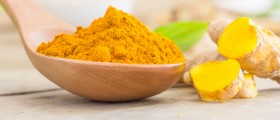
Natural Pain Relief
The common medicine will usually recommend the non-steroidal anti-inflammatory drugs (NSAIDs) to ease different types of pain. However, there might be no reason to use synthetic substances to cure the pain, because there are so many natural products that could be helpful.
Capsaicin
Capsaicin is the substance which makes the chilies so hot. Applied to the skin, it numbs the pain receptors and provokes the release of endorphins in the body. Creams containing 0.25% of capsaicin (Heet, Capzasin-P, Zostrix) are used to treat arthritis and nerve pain, and those with 0.75% are proven to help the patients with peripheral nerve damage. After the application, avoid touching the eyes, lips and other areas of the body which might be sensitive to capsaicin. Internally used capsaicin will improve the indigestion problems.
Devil’s Claw Root
This herb contains iridoid glycosides, known to ease the pain and have anti-inflammatory properties. It is used in osteoarthritis and rheumatoid arthritis pain management. The dose is about 750mg of herbal extract (or 1 teaspoon of devils’ claw tincture) and it should be used 3 times a day. It is not recommended to be used in children, pregnant women, breastfeeding mothers or people suffering from blood, liver and kidney problems. Patients with ulcers should also avoid this herbal remedy.
GLA
Gamma linoleic acid (GLA) is responsible for the production of substances that decrease inflammation in the body. The best sources of GLA are black currant (Ribes nigrum) and borage (Borago officinalis) seed oils and primrose essential oil (Oenothera biennis). 1 to 3g of GLA in supplements is the daily dose used in rheumatoid arthritis pain therapy. These herbs don’t work overnight – sometimes it takes 6 whole months of everyday use to start working.
Peppermint
Peppermint is beneficial in treatment of digestive and abdominal pains, but also as the local anesthetic cream (Ben-Gay, Solarcaine). Enteric coated capsules, which contain 0.2 to 0.4ml of peppermint oil, are advised to be used 3 times per day. Many people find the peppermint tea helpful to ease the pain. Couple of drops of peppermint oil, mixed in a tablespoon of vegetable oil and applied to the forehead, might ease the headache or migraine. It is important to remember that peppermint should not be used in babies.
White Willow Bark
White willow bark is rich in salicylic acid, salicin and apigenin, which reduce the pain in various medical conditions. It might be used as the tea or as the standardized extract. To make the tea, use 2 tablespoons of bark for a cup of water. Willow is not suitable for children, since it may cause Reye’s syndrome. People allergic to Aspirin, or patients with liver, kidney or blood-related problems should also avoid this herb.
Other Herbs
Arnica, boswellia, licorice and ginger roots, oregano, rosemary, and thyme are also well known and traditionally used herbal remedies for pain management. The list of herbs used to treat the pain is long and includes also: clove oil, fennel seeds, feverfew, and green tea.
Aromatherapy oils, such as lavender, chamomile, damask rose and peppermint can relieve the pain and even increase effects of common painkiller tablets.

















Your thoughts on this
Loading...